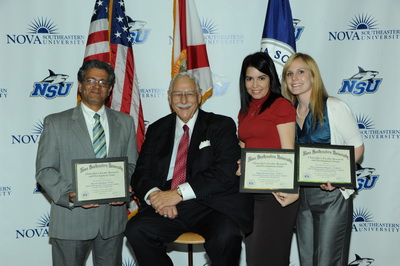Alginate/Hydroxyapatite Nanocomposite Scaffolds for Bone Tissue Engineering
Grant Winners
- Umadevi Kandalam, PhD – College of Dental Medicine
- Eric Stelnicki, MD – College of Dental Medicine
- Hossein Omidian, PhD – College of Pharmacy
- Amy Johanna Bouvier, DMD – College of Dental Medicine
- Silvia Beatriz Casas, DDS – College of Dental Medicine
Dean
- Robert Uchin D.D.S. – College of Dental Medicine
Abstract

Cleft palate is the most common birth defect in the US affecting approximately 225,000 children every year. It is formed when the two skull palates fail to close. The problems associated with the cleft palate are early feeding difficulties, speech abnormalities, recurrent ear infections, and mid-face growth deficiencies. Correction of the defect requires extensive surgical procedures using bone graft techniques, which is associated with an extended healing time. Tissue engineering approaches including biomaterial scaffolds offer promising and non-invasive alternative for palate reconstructions, improved esthetics and better patient compliance and affordability. Sodium alginate is a well-known natural biomaterial obtained from brown algae. It is widely used in tissue engineering due to its safety, biocompatibility, low cost, non-immunogenicity, and simple gelation techniques. Several studies have established that the sodium and calcium alginates are biocompatible and these are declared safe for human applications by regulatory agencies such as FAO/WHO. Alginate gels alone are less stable in vivo and cannot provide an optimal environment for the cell growth. In combination with nanocrystalline-hydroxyapatite (nHAP), the alginate gels display an enhanced stability, and promote osteogenic differentiation in mesenchymal stem cells. In addition, nHAP forms an integral structure within the regenerated bone, and thus reduces the healing time needed for the cleft palate repair. This project has two specific aims. First, the alginate/HAP nanocomposites will be fabricated, characterized and assessed in terms of their physical properties and appropriateness for cell proliferation and migration. In the second part, the scaffolds loaded with the mesenchymal stem cells will be investigated in terms of their effect in enhancing the osteogenic gene and protein expression of the mesenchymal stem cells. The outcome of the project will provide basic information for the application of the alginate-hydroxyapatite based scaffolds in cleft palate repair and bone regeneration.